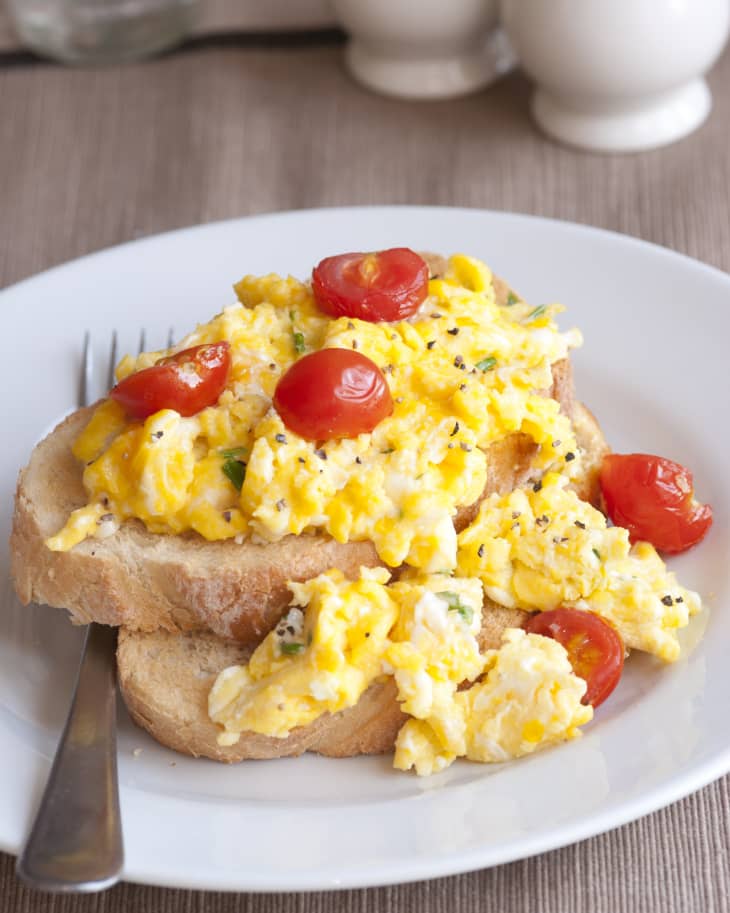Avoid These 5 Common Mistakes When Making Scrambled Eggs
Scrambled eggs are one of the most basic and comforting dishes, and, in fact, they were likely one of the first foods many of us learned to cook. But are you really doing it right? While everyone has their own favorite cooking method for scrambled eggs, there are a few rules that remain constant.
We’re sharing five common mistakes that are made when cooking scrambled eggs, plus our best tips on how to avoid them!
1. Not whisking the eggs enough.
It’s so easy to rush through this simple step and not give it the full attention it deserves. Thorough whisking is crucial to getting soft, fluffy scrambled eggs. With too little whisking the white and yolk don’t fully blend together, and you’re left with uneven eggs. This step is also important for incorporating air into the eggs.
→ Follow this tip: Thoroughly whisk the eggs so that the yolk is broken up and completely blended with the white. The eggs should have an even yellow tone. Depending on how vigorously you whisk, this step should take 30 to 40 seconds.
2. Whisking the eggs too soon.
It always feels great to tackle meal prep before it comes time to cook, but this step is best left until the last minute. Whisking serves two functions — it combines the white and yolk, and incorporates air into the eggs. When the eggs sit for too long, that extra air is lost and the eggs deflate.
→ Follow this tip: Whisk the eggs right before adding them to the pan. They’ll have a lot more air and volume, and best of all you’ll be rewarded with super fluffy scrambled eggs.
3. Using high heat.
While many foods thrive over a high flame, scrambled eggs are not one of them. You run the risk overcooking or burning the eggs when using high heat.
→ Follow this tip: Patience is key. Scrambled eggs need to be cooked low and slow. Cooking over low heat gives you more control over the eggs and prevents browning or burning.
4. Using the wrong pan.
If you’re cooking up two eggs for breakfast, there’s no need to use a 12-inch skillet. Using a pan that’s too large increases the chances of overcooking and potentially burning the eggs. On the other hand, if you’re making a half dozen eggs, it’s best not to attempt cramming them in a tiny skillet, where they won’t cook evenly.
→ Follow this tip: If you’re making just a few eggs, stick with a smaller (roughly 8-inch) pan. If you don’t have a small skillet, use a small saucepan. Also consider using a cast iron or nonstick pan; the cleanup will be so much easier.
5. Leaving the eggs on the heat too long
Leave scrambled eggs on the heat too long, and you’ll find yourself with a plate of dry, tough, rubbery eggs. Likely a far cry from the fluffy eggs you were hoping for. Yes, it’s important to make sure eggs are fully cooked before diving in, but take care than you don’t leave the pan on the heat for too long.
→ Follow this tip: Remove the pan from the heat when the eggs are still soft, and just before they’ve fully set. The residual heat in the pan will continue to cook the eggs for about another minute.
Scrambled eggs recipes to make breakfast better
What are your best tips for making scrambled eggs?
